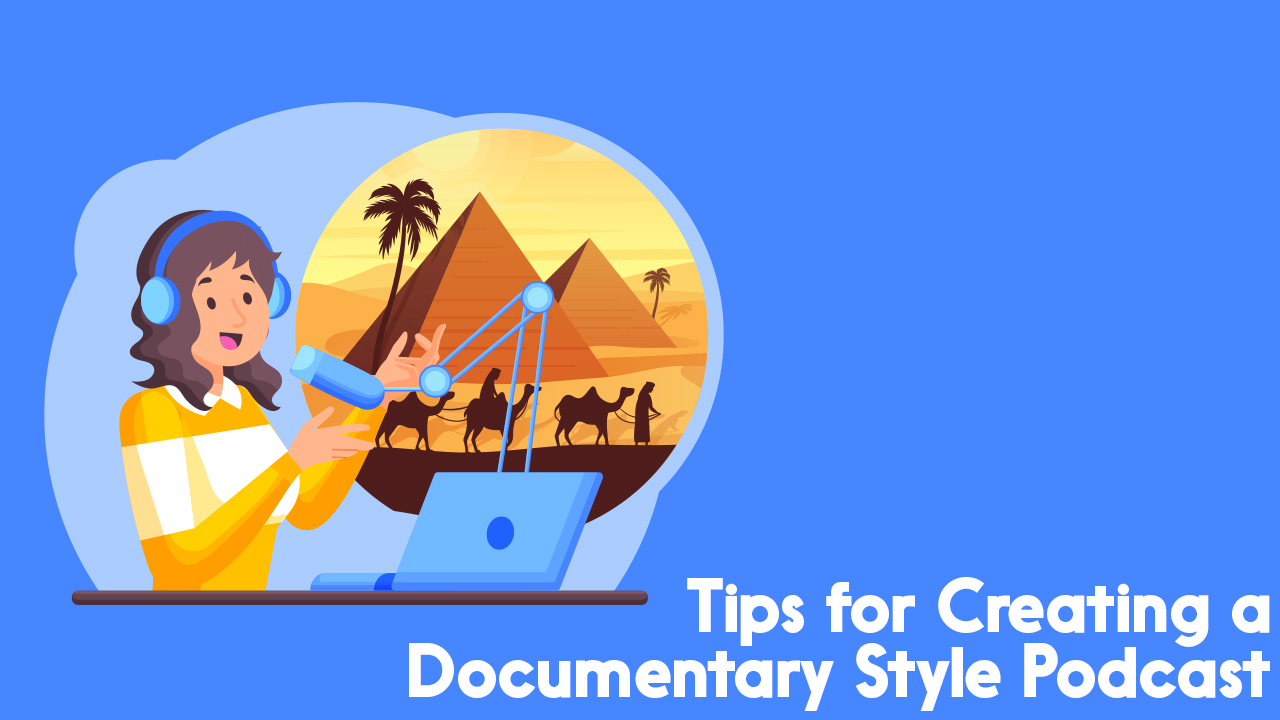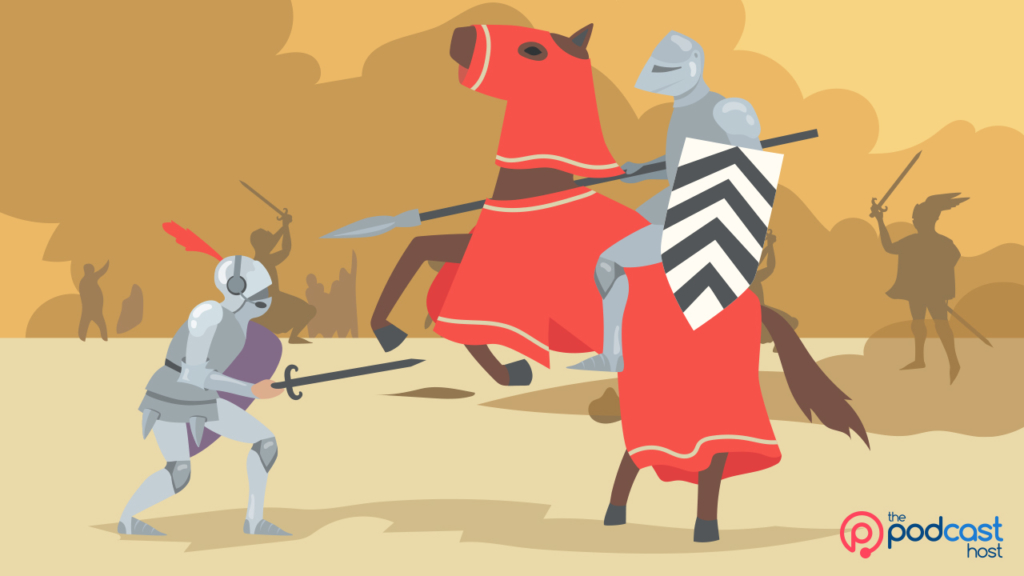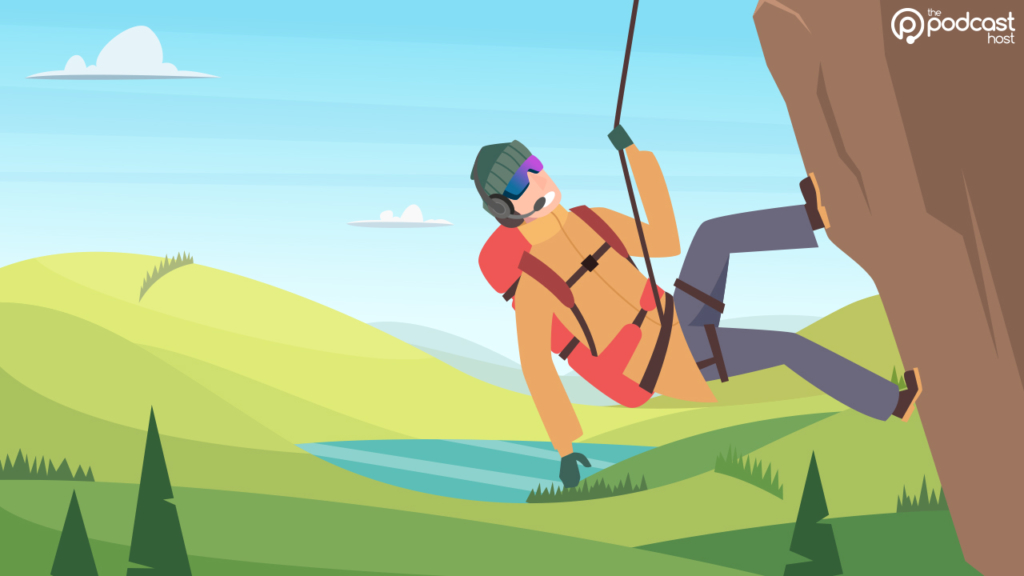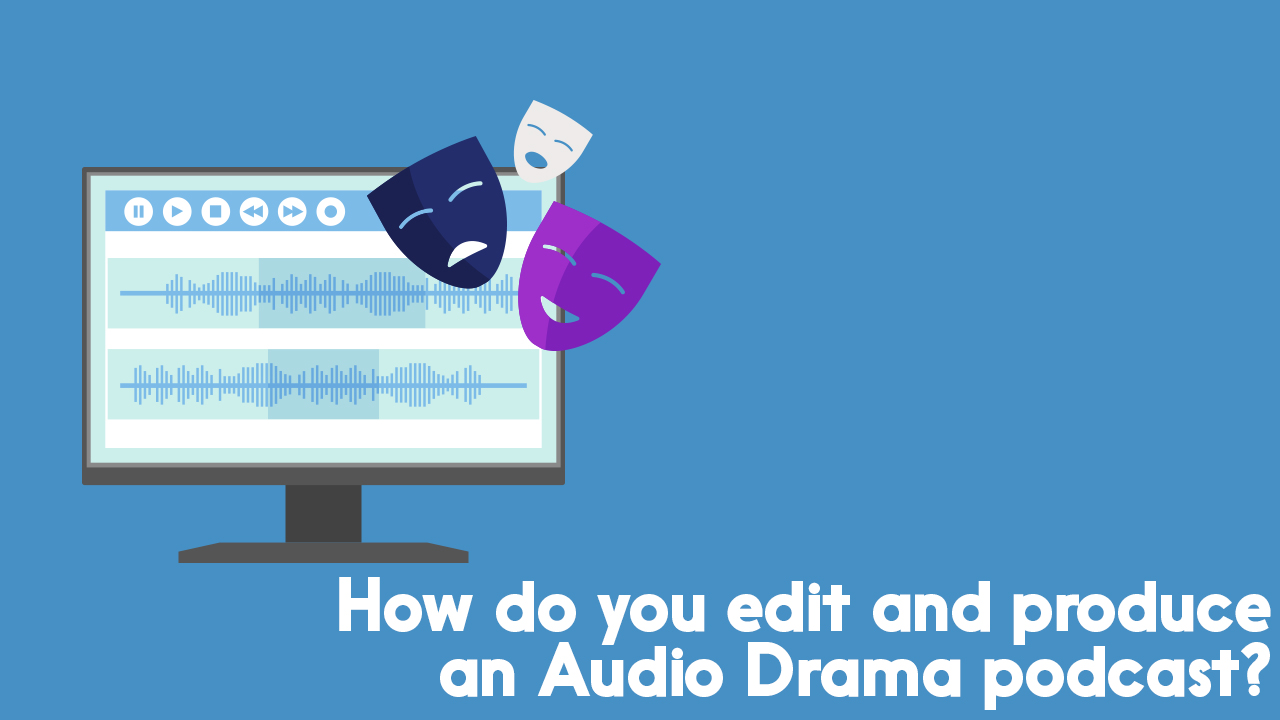Tips for Creating a Documentary Style Podcast

The term podcast can be considered a generic term that includes many sub-genres and styles. When most people hear “podcast” they think of a talk show. This isn’t always the case, though! There’s fiction podcasts (more commonly known as audio drama) and documentary podcasts. Documentary podcasts can blur the lines between your traditional podcast and audio drama in a non-fiction form. In this article I will:
- Show examples of narration vs acting, or a combination of both
- Provide suggestions on when or when not to use sound design
- Describe production techniques
- And more!
Pre-Production of a Documentary Podcast
So what’s meant by “pre-production”, you might be asking? This is a crucial planning process where a producer figures out every little nitty-gritty detail of a production. This can include everything from personnel to creative direction to budgets needed.
Producing a documentary-style podcast will require a script. But before you write a script you have some creative decisions to make. Will you have just a narrator reading from a script like a traditional audiobook? Will you want sound effects and music? Will there be interview segments like what we see in traditional audio-visual documentaries? There are several combinations available here and none are better than the other. It all comes down to personal preference for the creative direction you want to take.
Spotting the Script
This will be relevant if you want to use sound effects. Spotting in audio means going through material such as a script and making note of where, when, and what kind of sound effects are needed. These will greatly differ depending on what sort of creative direction you plan to take. Spotting can help you stay organized or help convey your artistic intentions to a sound designer, should you hire out.

Audio Drama-Style Documentary Podcast
Typically, you will be working with voice actor lines, sound effects, and music here. Overall, this will be the most sound-effects heavy. To counteract the lack of visuals, it will be important to convey locations and actions with sounds. These will support the actors who are in character, conveying the information that the documentarian wishes to convey. The lines between fiction and non-fiction can blur here.
Backgrounds such as traffic sounds for a cityscape or trees blowing in the wind for a nature setting, and actions sounds (footsteps, clothing movement, etc) will be important to help the listener understand what is happening in the narrative in combination with the dialogue.
Audio Drama-Style Documentary Podcast Example:
The show Hostile Worlds is an example of a narrative-focused show that aims to teach you something in each episode.
Episode 10, for example, focuses on the sun as the learning topic. The episode’s narrative is that Sarah and David are in a spacecraft hurtling towards the sun and features a scientist character to help further convey the aimed learning topics. The sound effects set the listener in the environment and the actors convey the information.
What to Watch Out for in Audio Drama-Style Documentary Podcasts
It is really easy to overdo the sound effects and music. These typically need to play a supporting role only to the dialogue. Always keep in mind that dialogue comes first, and sound effects and music “sit” under them during playback. However, sound effects and music should still be comfortably heard, as they play a role in driving the narrative. Getting beta listens during pre-release can help you ensure everything is balanced.
Traditional-Style Documentary Podcast
These will typically play like a traditional documentary minus the visual portion. They may feature:
- A Narrator
- Sound Effects and Music
- Acted out scenes (optional)
- Interview segments
- Old news clips (audio only)
If you plan to use news or press clips it’s SUPER important that you have the permission to do so. You’ll need to do some research if the clips are public domain or need to seek out permission to use them. This also includes copyright for music.
Traditional-Style Documentary Podcast Example
A show that follows this formula very well is Westward. A narrator introduces the listener to the segment topic. Music or a sound effect whoosh cue helps segue between narration, interviews, or old clips.
In this example, sound effects are only used to amplify a point or tone. The use of sparse sound effects gives them more of an impact.
With this style, the narrator and music will most likely be your major driver to evoke an emotional response out of a listener.
What to Watch Out for in a Traditional-Style Documentary Podcast
The “blocking”, aka separating segments using a sound effect, silent pause and/or music, is super important. This is so that a listener isn’t jarred during a scene change. We can’t see that we are being switched from a narration section to an interview section, for example. Without the visual, and sometimes without an auditory cue, the brain can get confused and the switch is jarring or feels incomplete.
Sparse-style Documentary Podcast
I’ve seen this technique mostly done with news articles. It can consist of:
- A narrator
- Voice actors for people who are quoted in an article (optional)
- Sound effects only on action sounds
- Music (optional)
Most of these I’ve seen are behind paywalls so I’ll give a made-up example to show how it can be used. Say your podcast is about a car theft ring. The narrator will read something akin to a news article as a script. If there are quotes people have said on record, the narrator can either do the voice themselves (as in audiobooks) or you can have a voice actor. Imagine the script says the criminal is about to be busted by police but flees. Here you can add sound effects of police sirens and a car screeching off as the narrator reads what happened.
What to Watch Out for With Sparse-style Documentary Podcast
A narrator drives the narrative here so be careful not to overdo the sound effects. Like the Traditional Documentary style, the sound effects play a supporting role to emphasize a line of dialogue or a point.

Conclusion
There are no strict rules for creating a documentary podcast. You can mix and match elements from any of the example styles given. At the end of the day, it’s still a creative endeavour. It’s up to you how you structure your show. These examples and tips should help you get on your way. You may want a full audio drama-style where dialogue and sound effects/music drive the narrative, or wish to scale back and let a narrator drive the narrative with sound effects for emphasis only. Or maybe you’ll take elements from different styles and create your own unique hybrid style!
For some follow-up resources here, be sure to check out:
- Creating a Highly-Produced Podcast
- Where to Find Podcast Sound Effects
- Where to Find Podcast Music
- How to Make a Fiction Podcast
- How to Edit & Produce an Audio Drama
- Hostile Worlds (our own audio drama-style documentary podcast)

